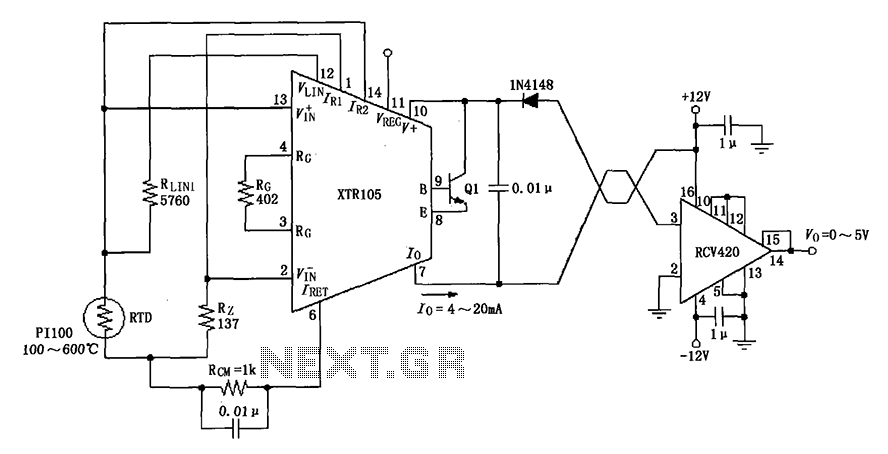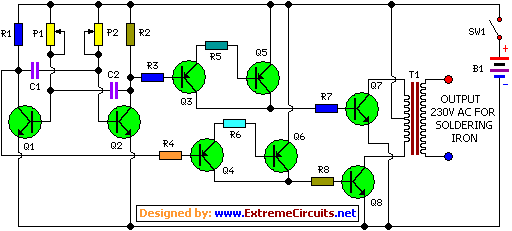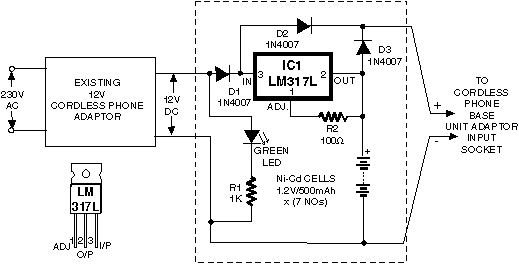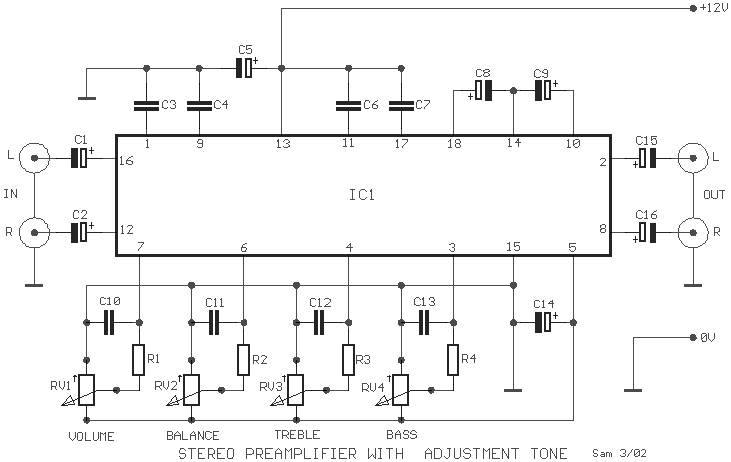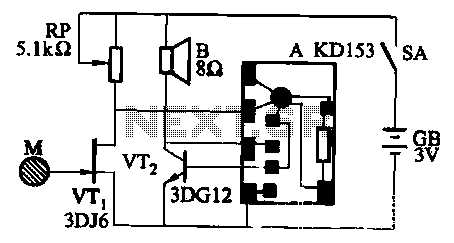
Dc-Dc Converter Circuit With 3.3V And 5V Outputs Circuit
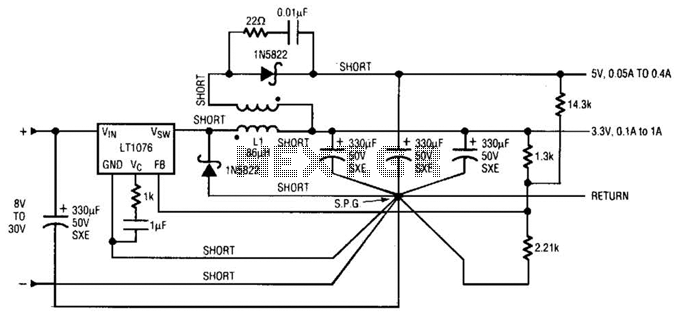
Input voltages can range from 8 V to 30 V. The load range for the 5 V output is from 0.05 A to 5 A, while the load range for the 3.3 V output is from 0.1 A to 1 A. The circuit is self-protected under no-load conditions. Under all load and line conditions, including cross regulation, the 3.3 V output varies from 3.25 V to 3.27 V. The 5 V output varies from 4.81 V to 5.19 V under the same conditions. In a typical application with a load of 0.5 A on the 3.3 V and 0.25 A on the 5 V, the efficiency is typically 76%. With an input voltage of 30 V and at full load, the efficiency drops to 66%. In normal operating regions, the efficiency is always better than 70%. The 5 V ripple is less than 75 mV, and the 3.3 V ripple is less than 50 mV across all line and load conditions.
The described circuit operates within a specified input voltage range of 8 V to 30 V, accommodating various load conditions for two output voltages: 5 V and 3.3 V. The load capacity for the 5 V output spans from 0.05 A to 5 A, while the 3.3 V output supports a load range of 0.1 A to 1 A. The circuit is designed with built-in self-protection mechanisms to handle no-load scenarios effectively, ensuring safe operation.
Under varying load and line conditions, including the effects of cross regulation, the 3.3 V output maintains a stable voltage, fluctuating minimally between 3.25 V and 3.27 V. Similarly, the 5 V output remains within a range of 4.81 V to 5.19 V. These output voltages are critical for applications requiring precise voltage levels.
Efficiency metrics indicate that in typical operational scenarios, where the 3.3 V output is loaded to 0.5 A and the 5 V output to 0.25 A, the circuit achieves an efficiency of approximately 76%. However, when subjected to a maximum input voltage of 30 V under full load conditions, efficiency decreases to 66%. Despite these variations, the circuit consistently operates with an efficiency exceeding 70% across most standard operational regions, which is essential for minimizing energy loss and heat generation.
Ripple voltage, an important parameter in power supply design, is also well-controlled in this circuit. The 5 V output ripple is maintained at less than 75 mV, while the 3.3 V output ripple is kept below 50 mV under all tested line and load conditions. This low ripple voltage enhances the stability and performance of the power supply, making it suitable for sensitive electronic applications. Input, voltages can range from 8 V to 30 V. The load range on the 5 V is 0,05 A to 5 A while the 3.3-V load range is 0.1 A to 1 A. The circuit is self-protected under no-load conditions. Over all load and line conditions, .including cross regulation, the 3.3-V output varies from 3.25 V to 3.27 V. The 5-V output varies from 4.81 V to 5.19 V under the same conditions. In a typical application to 0.5 A on the 3.3 V and 0.25 A on the 5 V, efficiency is typically 76%, With an input voltage of 30 V and a full-load condition, the efficiency drops to 66%.
In normal operating regions, efficiency is always better than 70%. The 5-V ripple is less than 75 mV and the 3.3-V ripple less than 50 mV over all line and load conditions.
The described circuit operates within a specified input voltage range of 8 V to 30 V, accommodating various load conditions for two output voltages: 5 V and 3.3 V. The load capacity for the 5 V output spans from 0.05 A to 5 A, while the 3.3 V output supports a load range of 0.1 A to 1 A. The circuit is designed with built-in self-protection mechanisms to handle no-load scenarios effectively, ensuring safe operation.
Under varying load and line conditions, including the effects of cross regulation, the 3.3 V output maintains a stable voltage, fluctuating minimally between 3.25 V and 3.27 V. Similarly, the 5 V output remains within a range of 4.81 V to 5.19 V. These output voltages are critical for applications requiring precise voltage levels.
Efficiency metrics indicate that in typical operational scenarios, where the 3.3 V output is loaded to 0.5 A and the 5 V output to 0.25 A, the circuit achieves an efficiency of approximately 76%. However, when subjected to a maximum input voltage of 30 V under full load conditions, efficiency decreases to 66%. Despite these variations, the circuit consistently operates with an efficiency exceeding 70% across most standard operational regions, which is essential for minimizing energy loss and heat generation.
Ripple voltage, an important parameter in power supply design, is also well-controlled in this circuit. The 5 V output ripple is maintained at less than 75 mV, while the 3.3 V output ripple is kept below 50 mV under all tested line and load conditions. This low ripple voltage enhances the stability and performance of the power supply, making it suitable for sensitive electronic applications. Input, voltages can range from 8 V to 30 V. The load range on the 5 V is 0,05 A to 5 A while the 3.3-V load range is 0.1 A to 1 A. The circuit is self-protected under no-load conditions. Over all load and line conditions, .including cross regulation, the 3.3-V output varies from 3.25 V to 3.27 V. The 5-V output varies from 4.81 V to 5.19 V under the same conditions. In a typical application to 0.5 A on the 3.3 V and 0.25 A on the 5 V, efficiency is typically 76%, With an input voltage of 30 V and a full-load condition, the efficiency drops to 66%.
In normal operating regions, efficiency is always better than 70%. The 5-V ripple is less than 75 mV and the 3.3-V ripple less than 50 mV over all line and load conditions.

